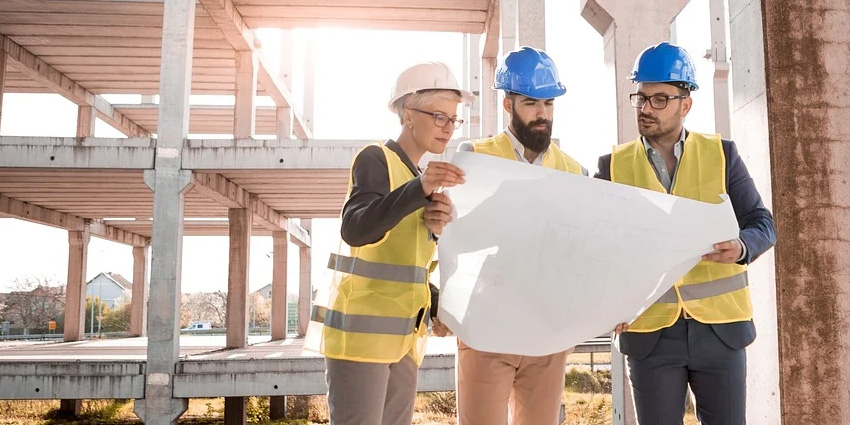Of all industries most likely to benefit from the emergence of extended reality (XR) in the enterprise, Architecture, Engineering, and Construction (AEC) is where we expect to see some of the biggest value.
As well as being a fiercely competitive marketplace where differentiation and customer experience drive success, AEC also deals with highly complex data that is notoriously difficult to collaborate on, especially in remote work environments.
Yet, since the COVID-19 pandemic forced the world of work into change, more AEC firms than ever before are turning to XR technologies to help bridge the gap.
In fact, along with AI and cloud computing, XR will play a huge role in transforming the AEC sector, with experts forecasting AEC firms will spend around USD 35 billion on XR technology by 2023.
Considering all the above, it’s no doubt XR will reshape the future of the AEC industry, but in what way?
Let’s take a look below at how.
Differentiation
Gaining a competitive advantage in the AEC industry isn’t easy. There are millions of firms all offering the same services to the same types of customers. This is why it’s crucial for AEC businesses to find unique solutions that help differentiate their services from every other competitor in the marketplace.
One exciting way XR technology can help AEC firms add differentiation to their offering is through the 3D visualization. By inviting clients to join them in an immersive virtual product demonstration, presenters can explore concepts and ideas in stunning ways that capture the imagination and secure confidence. Hosts are also able to walk their prospects through the virtual environment and explain each frame in real-time as the viewer enjoys a deep, immersive experience that traditional real-world models could never offer.
Collaboration
The arrival of XR technology in the AEC space means businesses no longer have to limit their resources within a set radius. They are free to hire teams with diversified skill sets from all over the globe, and tools like AR and VR collaboration ensure everyone stays on the same page, despite their location. By working together in dedicated, immersive VR environments, employees can present information in real time, solve problems as a team, share ideas and even socialize in the same way they would in real life.
The enhanced collaboration capabilities offered by the arrival of XR in AEC also resolve one of the biggest problems the industry faces: delays. While AEC is one of the largest industries in the US valued at $1.162 trillion in 2017, research tells us over 98% of construction projects incur cost overruns and delays every year. The reason? A fundamental lack of communication between construction parties, a lack of visualization, and a lack of support for advanced communications technologies. By investing in XR, then, AEC firms can significantly reduce the staggeringly high number of delays that are keeping them from meeting their goals on time.
Reduces Cost
As well as removing the obvious costs of renting office space and travelling to different locations, XR also helps AEC firms cut back on a number of expenses by virtualizing many business practices.
By designing or planning projects in virtual reality, for example, it’s much easier for teams to cut out unnecessary steps and focus on the core design. Teams can work together on the project in real-time, modifying and altering the project as they go in an efficient way that delivers results faster. It’s also far less expensive to build simulated models and protypes using digital materials instead of the real thing. This way, teams can determine if the project will work by way of trial and error without risking any financial loss.
Minimizes Risk
Construction is responsible for around 20% of all work-related deaths in the US alone, making health and safety a huge point of concern for the AEC sector.
While on-site training for new employees does happen, there are many limitations on what trainers can teach in real-life environments. New employees can ace a written exam, but, until recently, trainers had no way of knowing how a person would react if faced with a real-life emergency situation.
With XR however, AEC firms can significantly reduce risks in hazardous environments by simulating the construction in an immersive and controlled virtual environment. This experiential training allows companies to place employees in highly dangerous situations to gauge a realistic evaluation of how they respond.
By “living” through the virtual experience, the employee will engage more effectively with the class, while the interactive element helps stimulate knowledge retention.
When can we expect widespread adoption of XR in AEC?
While still in its formative stages, it’s clear that XR will be a valuable investment for AEC firms of all sizes in the years to come.
As the market matures and more XR developers start moving into the AEC space, we expect to see more companies incorporating this technology into their infrastructure to add differentiation, increase performance, enhance training and safety, and to stay relevant within an exciting marketplace that is rapidly evolving.







